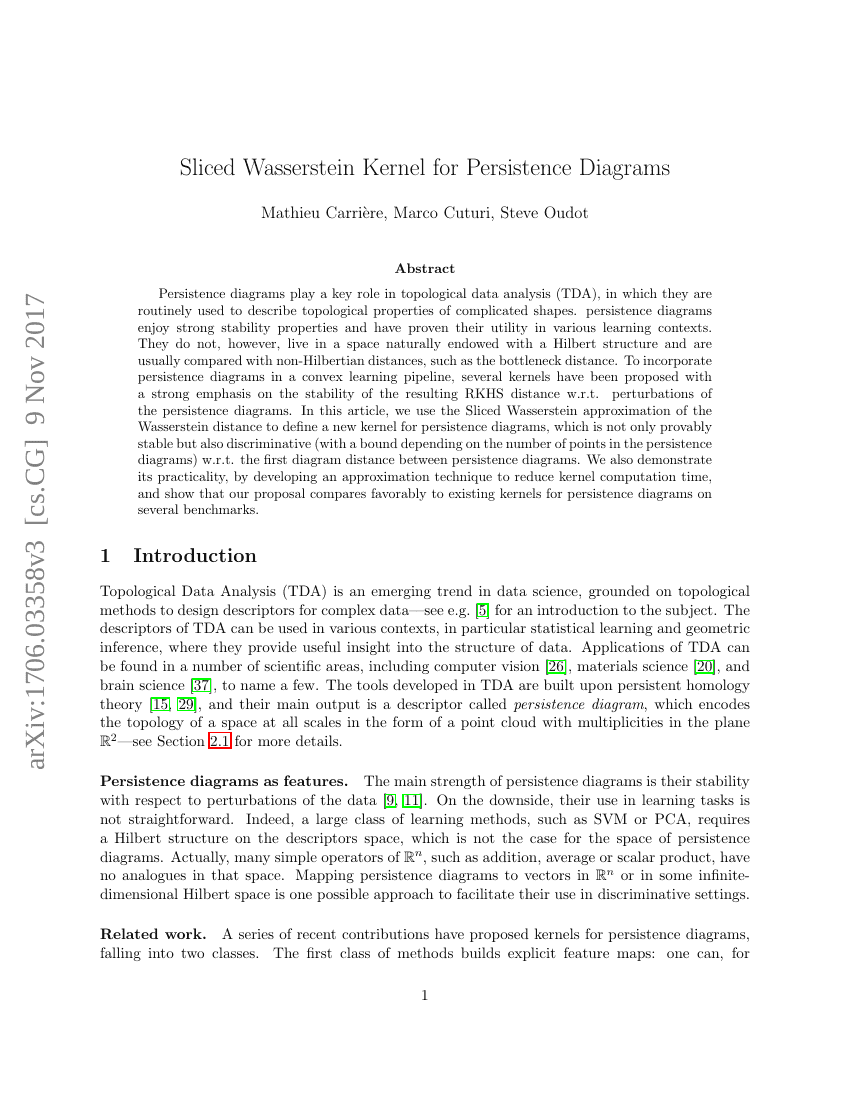Command Palette
Search for a command to run...
Mathieu Carrière; Marco Cuturi; Steve Oudot

Abstract
Persistence diagrams (PDs) play a key role in topological data analysis (TDA), in which they are routinely used to describe topological properties of complicated shapes. PDs enjoy strong stability properties and have proven their utility in various learning contexts. They do not, however, live in a space naturally endowed with a Hilbert structure and are usually compared with specific distances, such as the bottleneck distance. To incorporate PDs in a learning pipeline, several kernels have been proposed for PDs with a strong emphasis on the stability of the RKHS distance w.r.t. perturbations of the PDs. In this article, we use the Sliced Wasserstein approximation SW of the Wasserstein distance to define a new kernel for PDs, which is not only provably stable but also provably discriminative (depending on the number of points in the PDs) w.r.t. the Wasserstein distance $d_1$ between PDs. We also demonstrate its practicality, by developing an approximation technique to reduce kernel computation time, and show that our proposal compares favorably to existing kernels for PDs on several benchmarks.
Benchmarks
| Benchmark | Methodology | Metrics |
|---|---|---|
| graph-classification-on-neuron-average | SW | Accuracy: 71.20 |
| graph-classification-on-neuron-binary | SW | Accuracy: 85.1 |
| graph-classification-on-neuron-multi | SW | Accuracy: 57.3 |
Build AI with AI
From idea to launch — accelerate your AI development with free AI co-coding, out-of-the-box environment and best price of GPUs.